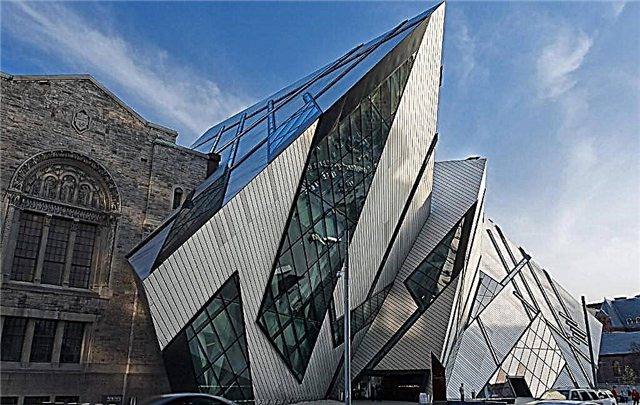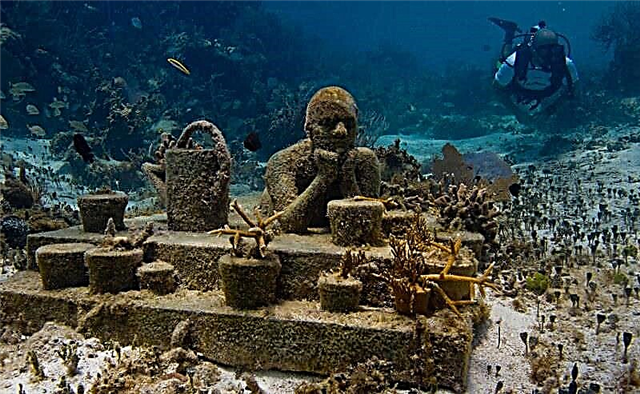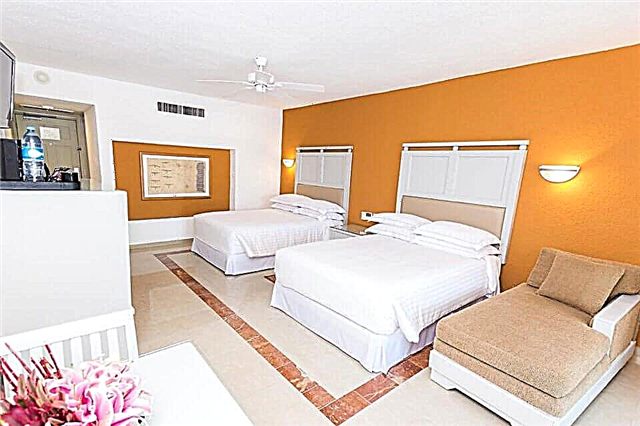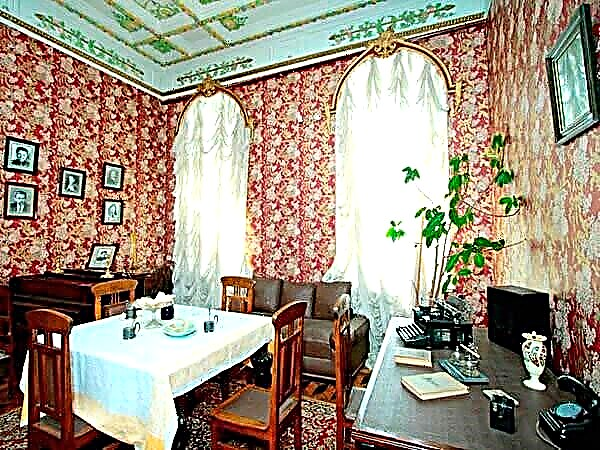Address: Russia, Moscow region, Sergiev Posad, Gethsemane ponds street, 1
Based in 1844
Main attractions: Cathedral of the Chernigov-Gethsemane Icon of the Mother of God (1890), gate bell tower (1900)
Shrines: two revered copies from the miraculous icon of the Mother of God, called "Chernigov Gethsemane", a cancer with the relics of St. Barnabas Gethsemane, a cancer with parts of the relics of the Kiev Caves and other saints, a stone from the tomb of the Mother of God from Jerusalem
Coordinates: 56 ° 18'25.5 "N 38 ° 10'44.4" E
Content:
The Chernigov monastery of the Trinity-Sergius Lavra is located a few kilometers from it, near the Upper Skete pond. It was created in the 40s of the XIX century at the Gethsemane skete and was formerly called "Caves". This place on the outskirts of Sergiev Posad is very picturesque and as a courtyard of the Lavra attracts many pilgrims. People come here to visit the famous cave churches, underground cells and taste the waters from the holy underground source.
History of the Chernihiv Skete
Gethsemane was the name of the place where Jesus Christ prayed for human salvation. In Gethsemane, the Mother of God also found her peace. The monastery with this name was created in 1843-1844, 3 km from the Trinity Monastery, in the quiet Isak's grove. This was done thanks to the efforts of the governor of the Lavra, the Monk Anthony. At first, several monks began to live here, who had a great inclination towards silence and an ascetic lifestyle. Unlike the monks of the Trinity Monastery, they did not have a salary, and they received clothes from "junk". Even the church utensils used in the new monastery during divine services were at first just wooden.

Gethsemane Chernigov Skete
In 1848 the holy fool Filippushka (1802-1968) settled here among the monks. Not far from the monastery, he began to dig a cell for himself in the ground, like the monks of the Kiev-Pechersk Lavra. And part of the monastic brethren joined the zealous holy fool. Until the fall of 1851, a whole underground complex was dug, which included a temple, framed by a wooden frame, and small cave cells for monks. At first, all underground structures were made earthen, and brick was laid much later.
A year later, an icon of the Chernigov Mother of God was presented to the underground church. Then, in 1852, the monastery was first visited by Vasily Ilyich Merkulov. At first, he took pilgrims to the monastery caves, and then accepted obedience. After 14 years, Merkulov became a monk, and they began to call him Barnabas. After a while, he became the people's confessor of the Caves of the Gethsemane monastery. The popularity of Hieromonk Barnabas among Christians was constantly growing. And many hurried to the "Caves" to receive the blessing of the elder. So, in 1905, the emperor of Russia Nicholas II confessed to the hieromonk. The following year, Barnabas graduated from the earthly path. The Orthodox Church canonized him in the mid-90s of the last century.
60-90 years of the XIX century became a time of active construction of the Gethsemane skete. Great work was carried out to expand the underground church, a wooden overground church was erected, and later a brick Chernigov church, cell buildings, a fence and a five-tiered bell tower.
In 1919, with the advent of Soviet power, the Trinity-Sergievsky Monastery was closed. And some of the monks began to live in the Gethsemane skete and the Chernigov monastery. But three years later, the authorities also liquidated the Chernigov monastery. The icon of the Chernigov Mother of God was transferred and placed in the Moscow Church of St. Sergius, located in the Rogozhskaya Yamskaya Sloboda.
In 1924, the Gethsemane monastery continued to exist as an agricultural artel. The final dispersal of the monastic brethren took place in 1928, with the closure of the last church on the monastery territory. The premises of the Gethsemane monastery began to be used for the club of the deaf and dumb. And in the middle of the last century, they were given to the military, who blew up all the buildings, and a building was erected on the vacated site for administrative and educational purposes.

Cathedral of the Chernigov-Gethsemane Icon of the Mother of God
The premises of the skete continued to be used for storage needs, to accommodate a prison and a special boarding school for disabled war veterans. And finally, in 1990, the long-suffering monastery was returned to the Trinity-Sergius Lavra.
Architectural monuments of the Chernigov male skete
The monastic architectural ensemble was formed in the late 19th - early 20th centuries, and in many respects has survived unchanged to our time. The territory of the monastery is a regular rectangle stretching from south to north. The buildings in it are arranged strictly symmetrically, and there is a lot of greenery around them.
The central part of the composition of the monastery ensemble is occupied by a large five-domed Chernigov temple, built of red brick instead of a dilapidated wooden church. It was erected over the cave temple from 1886 to 1889. The construction work was supervised by the famous Russian architect Vladimir Nikolaevich Sultanov (1850-1908). The project was so carefully worked out that throughout the construction of the underground temples remained operational. For a number of reasons, the decoration of the new brick cathedral was completed only in 1897. Now the majestic Chernigov temple has been completely restored. It is very beautiful, proportional and has a rich exterior decor.
The decoration of the skete is also a high, slightly inferior to the Lavra, five-tiered red-brick bell tower, erected above the eastern gate. On either side of it are attached two small churches - the Church of St. Nicholas the Wonderworker and the Church of Constantine and Helena. This beautiful gate complex was built simultaneously with the fence around the territory of the hermitage in 1895 according to the project of the architect Alexander Afanasyevich Latkov. Thanks to a successful architectural solution, the bell tower with the adjacent churches forms the same style ensemble with the large Chernigov Cathedral and is visible from many places in Sergiev Posad.
There are several active churches under the ground of the skete: the Church of the Archangel Michael, the chapel of the Iveron Icon of the Mother of God, as well as the Church of Anthony and Theodosius of the Caves. All of them have been restored, painted with the help of students of the Abramtsevo Art School and are used for divine services.

Cathedral of the Chernigov-Gethsemane Icon of the Mother of God
And the cells around them are striking in their small size. There is also an underground spring, the water from which is very popular with believers.
The cell buildings were built in the second half of the 19th century and at the very beginning of the 20th century. They are designed in a single pseudo-Russian style, characteristic of most of the architectural monuments of the Chernigov monastery. In the north of the territory there is a large necropolis where monks, benefactors and trustees of the monastery are buried. There are also graves where famous Russian philosophers, publicists and writers KN Leontiev (1831-1891) and VV Rozanov (1856-1919) are buried.
Current state and regime of visiting the Chernigov Skete
Today the skete exists in the status of a functioning courtyard of the Trinity-Sergius Lavra. Services are held every day - in the morning (at 6.00 or 6.30) and in the evening (at 16.45 or 17.00). There is a Sunday school for parishioners' children.
Two lists made from the miraculous icon of the Chernigov Mother of God are considered especially revered shrines of the skete; the cancer, which contains the relics belonging to Barnabas of Gethsemane; and the stone brought from Jerusalem from the tomb of the Mother of God.
There is a small confectionery shop at the skete where you can buy bread made without the use of yeast: rye-spelled, rye-wheat, rye-flax and corn.There are also several varieties of delicious kvass made with bread sourdough on sale - ginger, Petrovsky (with horseradish and honey), beetroot, coniferous, etc. In addition, herbal honey, flaxseed oil, salted mushrooms are very popular among parishioners and guests of the skete. monastery pies and sauerkraut.
How to get to the Chernihiv Skete
The Gethsemane Chernigov Skete is located in the city of Sergiev Posad on Gethsemane Ponds Street, 1.
On our own - by minibus and on foot. From the Sergiev Posad railway station, you can drive closer to the skete by shuttle buses No. 7, 8. You need to get off at the Ferma stop (entrance to the Ferma village) and walk along the street. Sunny. The skete is located between the villages (microdistricts) Ferma and Kinovia. But since the city is small, it is not difficult to walk from the railway station to the territory of the hermitage. To do this, first you need to move along the railway embankment towards Aleksandrov (to the north). At the second railway crossing - turn right onto st. Bethany. It leads to the Skete ponds, behind which the skete's territory is located.

Bell tower
By car. From the city center from the Troitsko-Sergievskaya Lavra from the Red Army street, turn right (east) onto the street. Karl Marx. Continue along Bethany Street to cross the railway. At the second turn to the left after the railway crossing, go to Karbushinsky lane, and then along Ogorodnaya and Novoogorodnaya streets to the territory of the skete.











